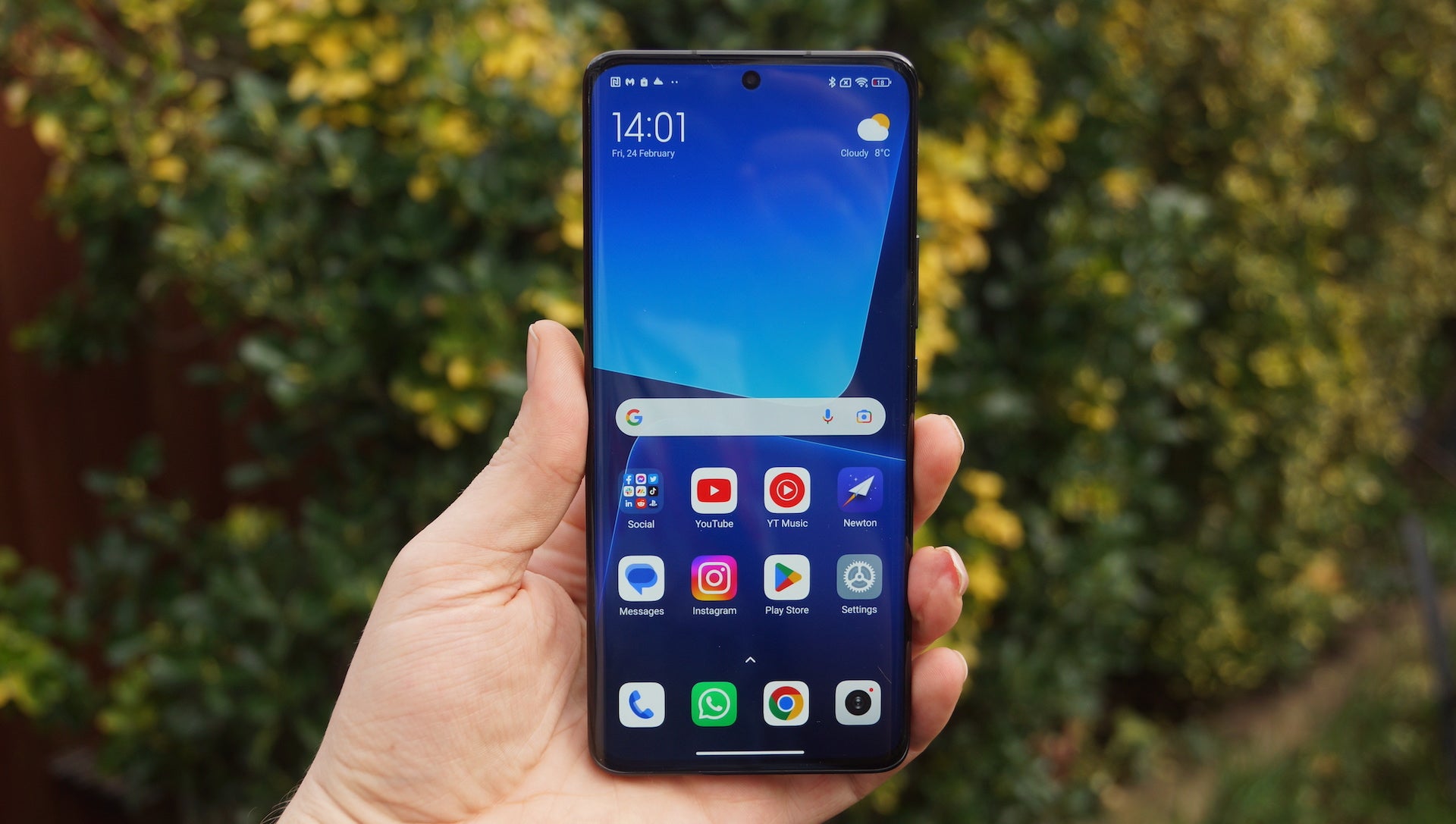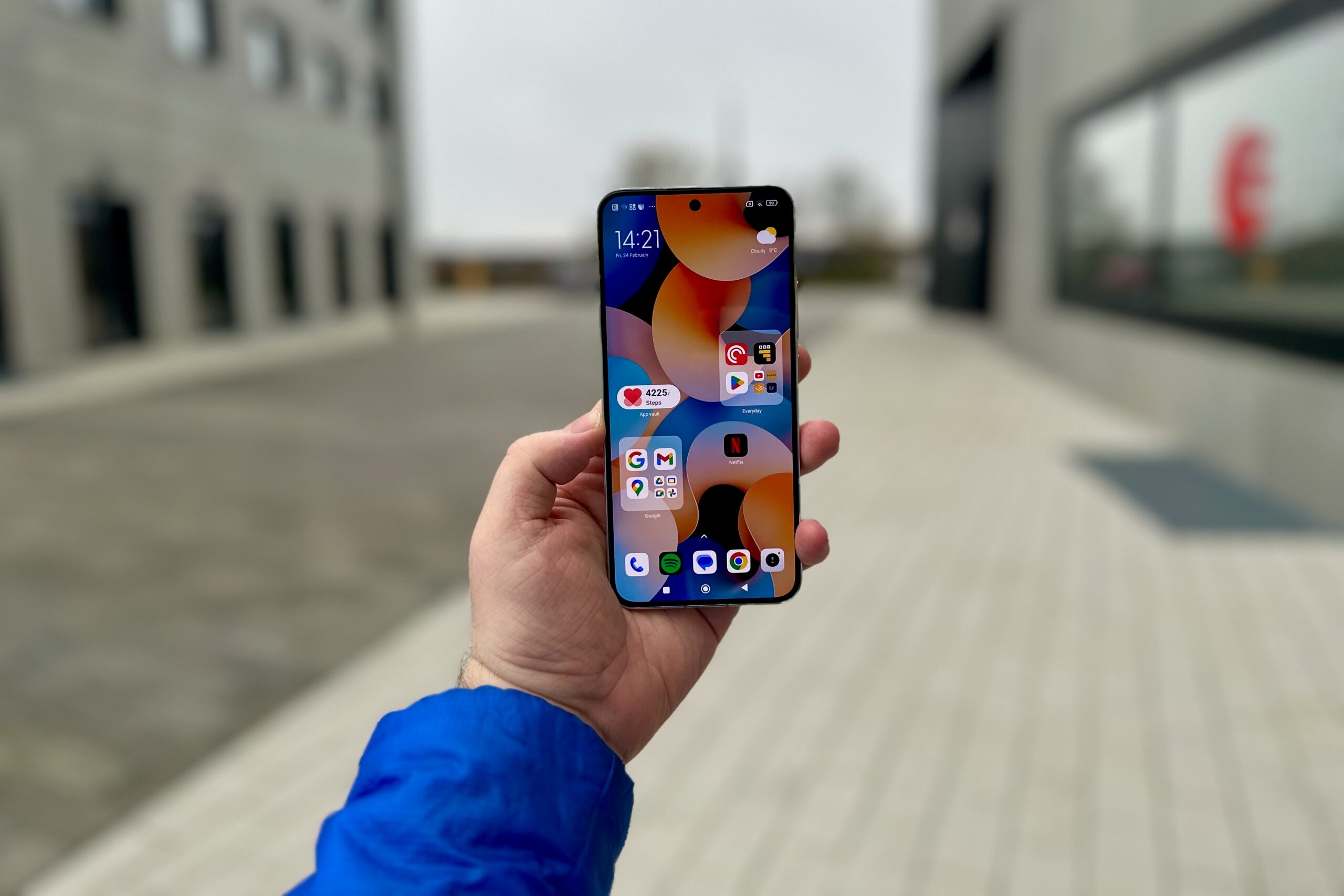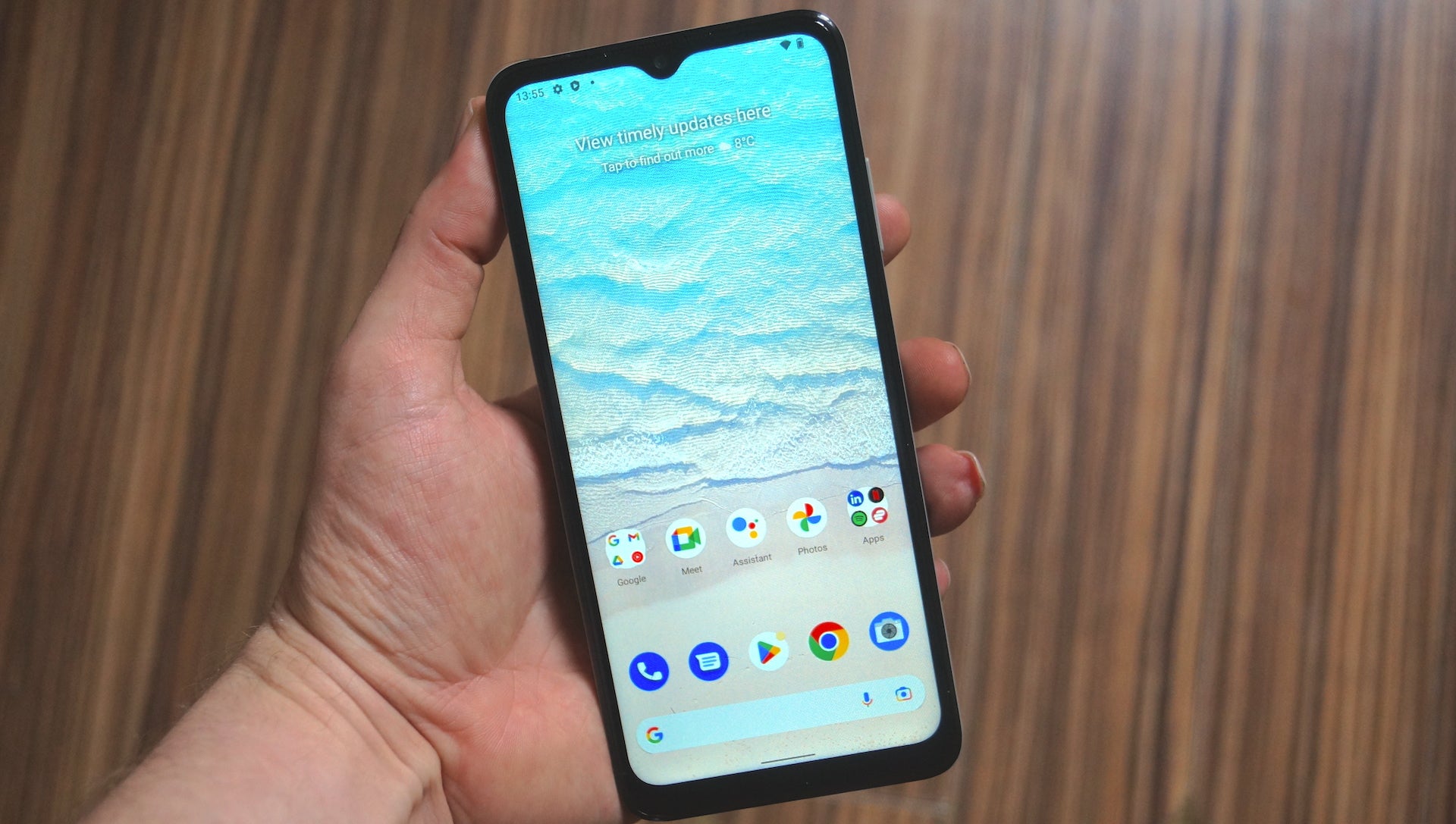The Xiaomi 13 Pro looks like a capable bit of kit with a high-end display, capable cameras with all the bells and whistles and flagship-level performance, but the MIUI 14 experience still isn’t ideal with odd UI choices and more bloatware than you’ll find on basically any other flagship-level mobile in 2023.
Whether the hardware can outshine the software issues is yet to be seen…
Availability
- USATBC
- EuropeTBC
- CanadaTBC
- AustraliaTBC
-
High-end 6.7-inch displaySpecs include a dynamic 120Hz refresh rate, support for Dolby Vision and HDR10+ and a WQHD+ resolution that beats even the Galaxy S23 Ultra. -
120W HyperCharge techXiaomi’s HyperCharge tech apparently delivers a full charge in just 19 minutes. -
Flagship-level performanceSporting a Snapdragon 8 Gen 2 and 12GB of RAM, the Xiaomi 13 Pro should deliver top-notch performance
Introduction
The high-end Xiaomi 13 Pro is official, and it could be a strong competitor to Samsung’s Galaxy S23 Ultra.
Boasting specs including a 6.78-inch display with a WQHD+ resolution, dynamic 120Hz refresh rate and Dolby Vision support alongside a triple 50MP rear camera offering, Qualcomm’s top-end chipset and super-fast 120W charging, the Xiaomi 13 Pro certainly has potential – on paper anyway.
I’m not quite ready to deliver my full final thoughts on Xiaomi’s latest flagship, but here are some early impressions based on my limited time with the Xiaomi 13 Pro so far.
Design and screen
- Premium glass and metal construction
- Large square camera bump
- Impressively high-res 6.78-inch display
The Xiaomi 13 Pro is a premium bit of kit with a large curved display and a near all-glass design that looks absolutely stunning – though the downside is that it’s a bit of a fingerprint magnet, something I noticed even during my limited hands-on time. Maybe keep a microfiber cloth at the ready for this one…
Shiny appearance aside, the Xiaomi 13 Pro looks and feels well-built and comfortable to hold in hand thanks to the curvature at its edges. The curved edges of the display aren’t as dramatic as those from smartphones in the late 2010s, instead offering a subtle curvature that doesn’t cut off too much of the display.
Flip the phone over and you’ll find a fairly large camera housing in the top-left corner. It’s not quite as pronounced as that of the Vivo X90 Pro, but to be honest, it’s not that far off. It’s certainly thick enough to cause a wobble when put on a table, anyway.
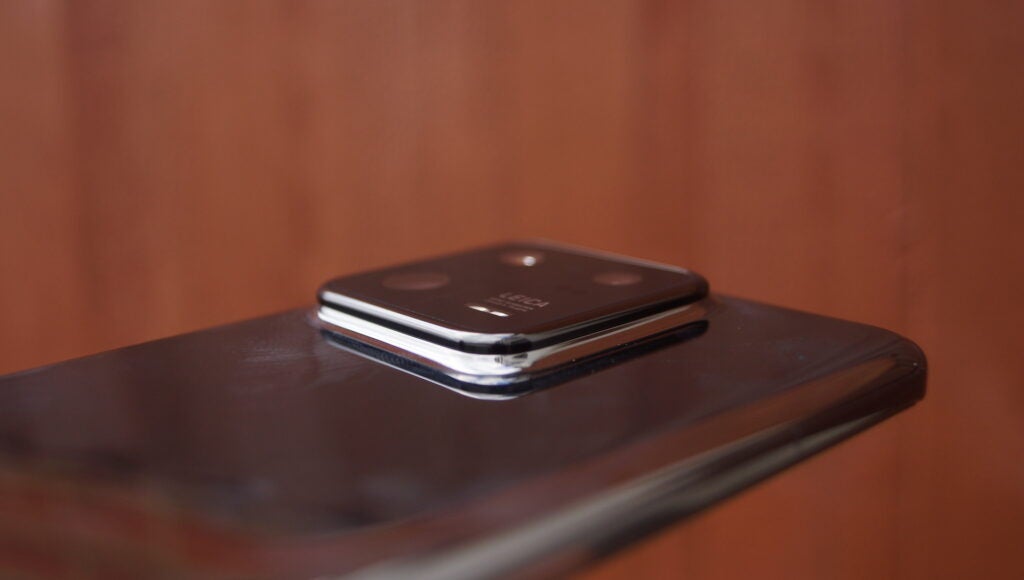
It is a stylish camera bump – as stylish as a camera bump can be, anyway – with a design that looks like the housing has protruded from within the rear panel, pushing its way to the surface with smooth curved edges that disappear into the rear. There’s also subtle silver detailing that visually breaks up the larger camera block into three smaller segments, with a camera housed within each segment.
The rest of the rear panel is largely nondescript, aside from the Xiaomi logo that sits near the bottom edge.
The display itself is equally as top-end as the rest of the phone, sporting a 6.73-ich AMOLED display with a pixel-packed WQHD+ (3200 x 1440) resolution and an adaptive 120Hz refresh rate that, like most other flagships in 2023, can drop down to as little as 1Hz to save battery life – a very important factor when powering such a high-res panel.
I haven’t had the chance to boot up Netflix, but from scrolling around the phone, using a few pre-installed apps and taking a few snaps using the impressive camera setup, it certainly looks promising, but I’ll properly put it through its paces for the full review.
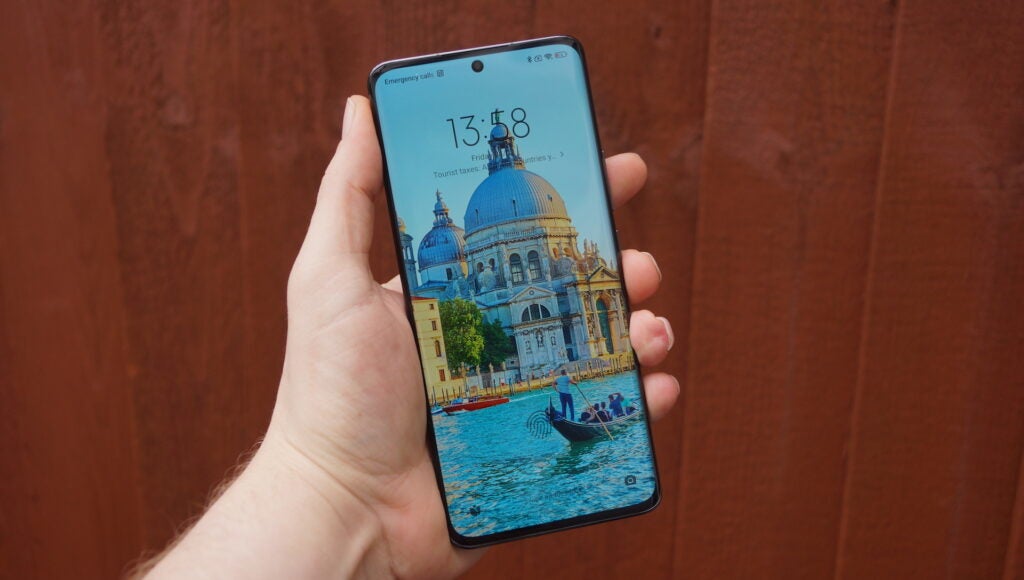
Cameras
- Triple 50MP rear camera offering
- Main 50MP camera boasts a 1-inch sensor
- Dolby Vision HDR video recording at 4K@60fps
As with its predecessor, cameras are a huge focus for the Xiaomi 13 Pro, sporting a trio of 50MP lenses across the main, telephoto and ultrawide cameras, though it’s the main sensor that stands out most. That’s down to the inclusion of a 1-inch sensor, the same as that found in the likes of the Vivo X90 Pro and larger than most flagships including the Samsung Galaxy S23 Ultra.
As I found out with the Vivo X90 Pro, the larger sensor really is a game-changer in low-light scenarios, and I expect similar performance from the Xiaomi 13 Pro – though I’ll have to put that to the test for the full review.
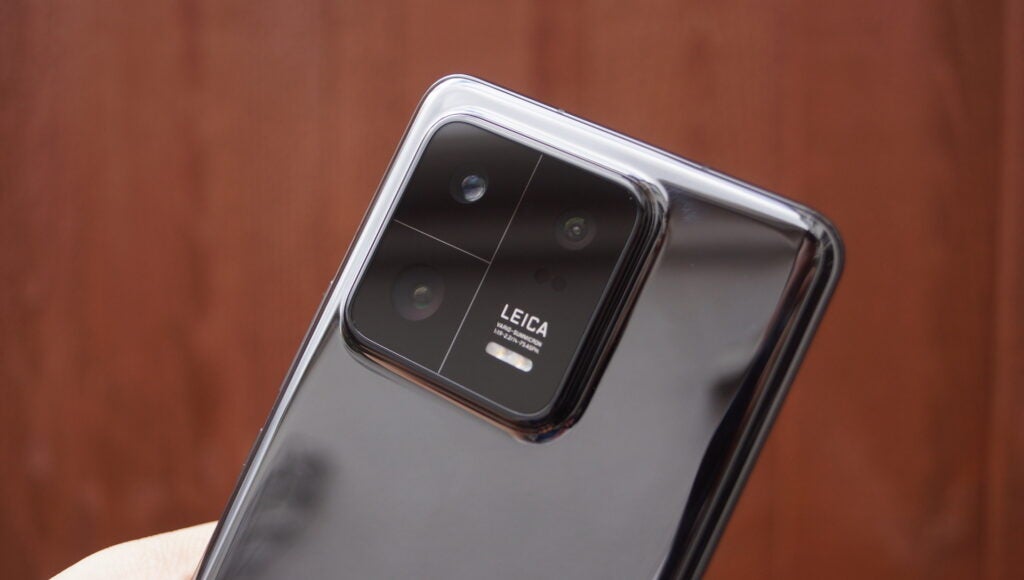
Sheer size of the sensor aside, the main lens boasts other premium features like an f/1.9 aperture, Portrait Night mode, large 1.6um pixels and the ability to shoot Dolby Vision video at up to 4K@60fps, all pointing towards a very capable camera.
It’s not the only camera though; the 50MP telephoto lens offers a tight 75mm angle ideal for portrait photography. It uses a combination of OIS and Xiaomi’s ‘floating telephoto camera’ tech in a bid to deliver sharp, focused shots, and also allows for macro video capture.
There’s also the 50MP ultra-wide lens with an f/2.2 aperture and a 115-degree field of view. The tech within isn’t quite as advanced as the main and telephoto lenses, but the camera should still produce crisp wide shots.
Flip the phone over and you’ll find a 32MP in-display selfie camera that boasts support for advanced features like night photography and HDR capture, and it boasts both 0.8x and 1x zooms for group selfies too.
I took a few snaps from each lens during my hands-on time and the results looked very promising, with images packed with detail and vibrant colour, but I’ll leave the in-depth testing for the full review.
Performance
- Snapdragon 8 Gen 2 chipset
- 120W HyperCharge capabilities
- MIUI 14 is full of bloatware
Within the Xiaomi 13 Pro you’ll find Qualcomm’s top-end Snapdragon 8 Gen 2 chipset and 12GB of RAM regardless of whether you opt for the 256GB or 512GB storage option. The 4nm chipset, as we know from rivals like the OnePlus 11, delivers top-notch performance that shouldn’t struggle to run anything on the Android OS.
As expected, I didn’t experience any kind of lag during my hands-on time with the phone, with taps and swipes registering instantly and apps opening in the blink of an eye. It’ll certainly be interesting to see how the phone benchmarks.
It also boasts everything from 5G support to support for Wi-Fi 7 (yes, that’s right, it’s already onto 7!), Bluetooth 5.3, dual-SIM connectivity and NFC for mobile payments, though without any presence in the US, there’s no mmWave support.
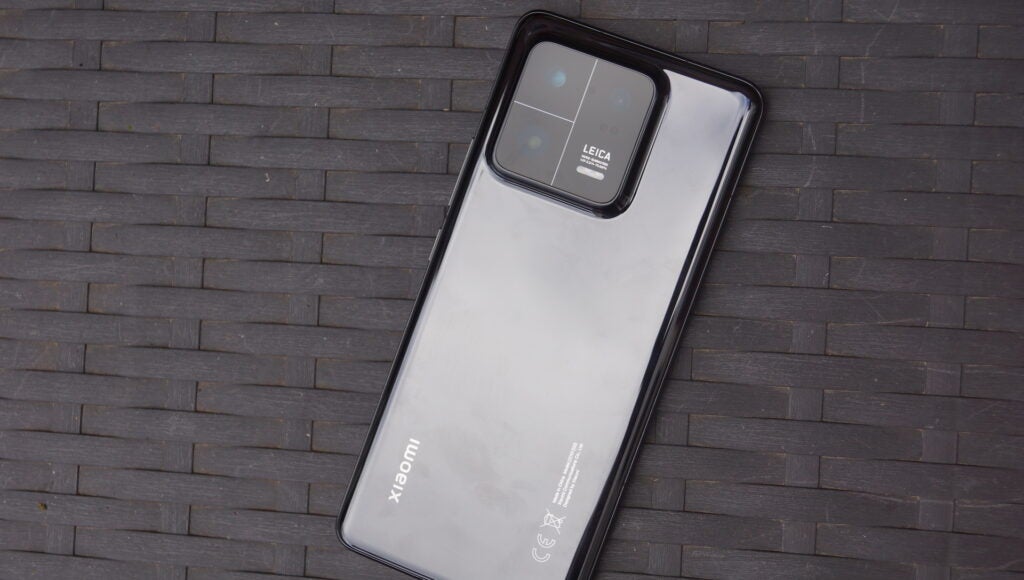
The 4,820mAh battery found within isn’t quite as large as the 5,000mAh battery found in other top-end flagships in 2023, though with the improved battery efficiency of the Snapdragon 8 Gen 2 chipset, I feel like it should very much be an all-day device. The only thing that could complicate that is the high-resolution display, which will no doubt need a lot of power to run.
Still, with 120W HyperCharge support that Xiaomi claims can provide a 100% charge in just 19 minutes, it’ll be easy enough to top the phone up when the battery begins to run down. There’s also 50W wireless turbocharging with compatible wireless chargers, and there’s 10W reverse wireless charging too.
That’s all great, but it’s arguably let down by Xiaomi’s MIUI 14 based on Android 13. It’s quite a stark change from the stock Android 13 experience provided by the Pixel 7 Pro, not only in terms of the overall look and feel but the way that you interact with the phone. The quick settings menu, for example, is accessed by swiping down from the top-right of the display rather than being baked directly into the notification shade.
That’s kind of forgivable – Xiaomi needs to differentiate itself somehow – but what is unforgivable is the amount of bloatware that comes pre-installed on the phone. It’s almost offensive at such a high price point to turn a phone on for the first time to see a swathe of apps, both Xiaomi-branded and third-party, that you have no interest in. Why would I need Booking.com pre-installed?
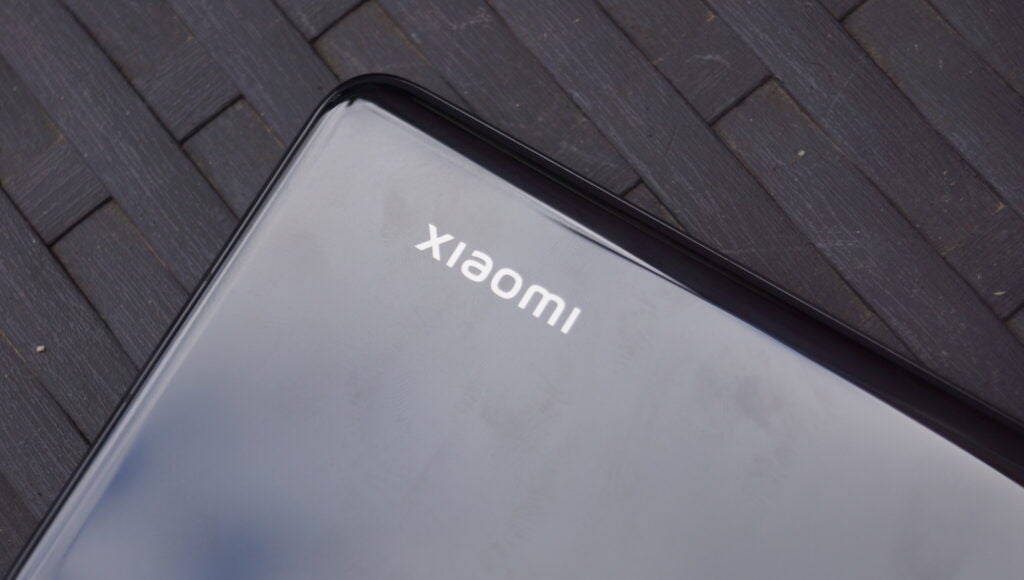
You can uninstall most of these pretty easily, but the fact that you have to do it in the first place is a huge annoyance. C’mon Xiaomi, I thought we were past that.
Latest deals
Early Thoughts
The Xiaomi 13 Pro looks like a capable bit of kit with a high-end display, capable cameras with all the bells and whistles and flagship-level performance, but the MIUI 14 experience still isn’t ideal with odd UI choices and more bloatware than you’ll find on basically any other flagship-level mobile in 2023.
Whether the hardware can outshine the software issues is yet to be seen…
The Xiaomi 13 Pro looks like a capable bit of kit with a high-end display, capable cameras with all the bells and whistles and flagship-level performance, but the MIUI 14 experience still isn’t ideal with odd UI choices and more bloatware than you’ll find on basically any other flagship-level mobile in 2023.
Whether the hardware can outshine the software issues is yet to be seen…
Availability
- USATBC
- EuropeTBC
- CanadaTBC
- AustraliaTBC
-
High-end 6.7-inch displaySpecs include a dynamic 120Hz refresh rate, support for Dolby Vision and HDR10+ and a WQHD+ resolution that beats even the Galaxy S23 Ultra. -
120W HyperCharge techXiaomi’s HyperCharge tech apparently delivers a full charge in just 19 minutes. -
Flagship-level performanceSporting a Snapdragon 8 Gen 2 and 12GB of RAM, the Xiaomi 13 Pro should deliver top-notch performance
Introduction
The high-end Xiaomi 13 Pro is official, and it could be a strong competitor to Samsung’s Galaxy S23 Ultra.
Boasting specs including a 6.78-inch display with a WQHD+ resolution, dynamic 120Hz refresh rate and Dolby Vision support alongside a triple 50MP rear camera offering, Qualcomm’s top-end chipset and super-fast 120W charging, the Xiaomi 13 Pro certainly has potential – on paper anyway.
I’m not quite ready to deliver my full final thoughts on Xiaomi’s latest flagship, but here are some early impressions based on my limited time with the Xiaomi 13 Pro so far.
Design and screen
- Premium glass and metal construction
- Large square camera bump
- Impressively high-res 6.78-inch display
The Xiaomi 13 Pro is a premium bit of kit with a large curved display and a near all-glass design that looks absolutely stunning – though the downside is that it’s a bit of a fingerprint magnet, something I noticed even during my limited hands-on time. Maybe keep a microfiber cloth at the ready for this one…
Shiny appearance aside, the Xiaomi 13 Pro looks and feels well-built and comfortable to hold in hand thanks to the curvature at its edges. The curved edges of the display aren’t as dramatic as those from smartphones in the late 2010s, instead offering a subtle curvature that doesn’t cut off too much of the display.
Flip the phone over and you’ll find a fairly large camera housing in the top-left corner. It’s not quite as pronounced as that of the Vivo X90 Pro, but to be honest, it’s not that far off. It’s certainly thick enough to cause a wobble when put on a table, anyway.

It is a stylish camera bump – as stylish as a camera bump can be, anyway – with a design that looks like the housing has protruded from within the rear panel, pushing its way to the surface with smooth curved edges that disappear into the rear. There’s also subtle silver detailing that visually breaks up the larger camera block into three smaller segments, with a camera housed within each segment.
The rest of the rear panel is largely nondescript, aside from the Xiaomi logo that sits near the bottom edge.
The display itself is equally as top-end as the rest of the phone, sporting a 6.73-ich AMOLED display with a pixel-packed WQHD+ (3200 x 1440) resolution and an adaptive 120Hz refresh rate that, like most other flagships in 2023, can drop down to as little as 1Hz to save battery life – a very important factor when powering such a high-res panel.
I haven’t had the chance to boot up Netflix, but from scrolling around the phone, using a few pre-installed apps and taking a few snaps using the impressive camera setup, it certainly looks promising, but I’ll properly put it through its paces for the full review.

Cameras
- Triple 50MP rear camera offering
- Main 50MP camera boasts a 1-inch sensor
- Dolby Vision HDR video recording at 4K@60fps
As with its predecessor, cameras are a huge focus for the Xiaomi 13 Pro, sporting a trio of 50MP lenses across the main, telephoto and ultrawide cameras, though it’s the main sensor that stands out most. That’s down to the inclusion of a 1-inch sensor, the same as that found in the likes of the Vivo X90 Pro and larger than most flagships including the Samsung Galaxy S23 Ultra.
As I found out with the Vivo X90 Pro, the larger sensor really is a game-changer in low-light scenarios, and I expect similar performance from the Xiaomi 13 Pro – though I’ll have to put that to the test for the full review.

Sheer size of the sensor aside, the main lens boasts other premium features like an f/1.9 aperture, Portrait Night mode, large 1.6um pixels and the ability to shoot Dolby Vision video at up to 4K@60fps, all pointing towards a very capable camera.
It’s not the only camera though; the 50MP telephoto lens offers a tight 75mm angle ideal for portrait photography. It uses a combination of OIS and Xiaomi’s ‘floating telephoto camera’ tech in a bid to deliver sharp, focused shots, and also allows for macro video capture.
There’s also the 50MP ultra-wide lens with an f/2.2 aperture and a 115-degree field of view. The tech within isn’t quite as advanced as the main and telephoto lenses, but the camera should still produce crisp wide shots.
Flip the phone over and you’ll find a 32MP in-display selfie camera that boasts support for advanced features like night photography and HDR capture, and it boasts both 0.8x and 1x zooms for group selfies too.
I took a few snaps from each lens during my hands-on time and the results looked very promising, with images packed with detail and vibrant colour, but I’ll leave the in-depth testing for the full review.
Performance
- Snapdragon 8 Gen 2 chipset
- 120W HyperCharge capabilities
- MIUI 14 is full of bloatware
Within the Xiaomi 13 Pro you’ll find Qualcomm’s top-end Snapdragon 8 Gen 2 chipset and 12GB of RAM regardless of whether you opt for the 256GB or 512GB storage option. The 4nm chipset, as we know from rivals like the OnePlus 11, delivers top-notch performance that shouldn’t struggle to run anything on the Android OS.
As expected, I didn’t experience any kind of lag during my hands-on time with the phone, with taps and swipes registering instantly and apps opening in the blink of an eye. It’ll certainly be interesting to see how the phone benchmarks.
It also boasts everything from 5G support to support for Wi-Fi 7 (yes, that’s right, it’s already onto 7!), Bluetooth 5.3, dual-SIM connectivity and NFC for mobile payments, though without any presence in the US, there’s no mmWave support.

The 4,820mAh battery found within isn’t quite as large as the 5,000mAh battery found in other top-end flagships in 2023, though with the improved battery efficiency of the Snapdragon 8 Gen 2 chipset, I feel like it should very much be an all-day device. The only thing that could complicate that is the high-resolution display, which will no doubt need a lot of power to run.
Still, with 120W HyperCharge support that Xiaomi claims can provide a 100% charge in just 19 minutes, it’ll be easy enough to top the phone up when the battery begins to run down. There’s also 50W wireless turbocharging with compatible wireless chargers, and there’s 10W reverse wireless charging too.
That’s all great, but it’s arguably let down by Xiaomi’s MIUI 14 based on Android 13. It’s quite a stark change from the stock Android 13 experience provided by the Pixel 7 Pro, not only in terms of the overall look and feel but the way that you interact with the phone. The quick settings menu, for example, is accessed by swiping down from the top-right of the display rather than being baked directly into the notification shade.
That’s kind of forgivable – Xiaomi needs to differentiate itself somehow – but what is unforgivable is the amount of bloatware that comes pre-installed on the phone. It’s almost offensive at such a high price point to turn a phone on for the first time to see a swathe of apps, both Xiaomi-branded and third-party, that you have no interest in. Why would I need Booking.com pre-installed?

You can uninstall most of these pretty easily, but the fact that you have to do it in the first place is a huge annoyance. C’mon Xiaomi, I thought we were past that.
Latest deals
Early Thoughts
The Xiaomi 13 Pro looks like a capable bit of kit with a high-end display, capable cameras with all the bells and whistles and flagship-level performance, but the MIUI 14 experience still isn’t ideal with odd UI choices and more bloatware than you’ll find on basically any other flagship-level mobile in 2023.
Whether the hardware can outshine the software issues is yet to be seen…


















